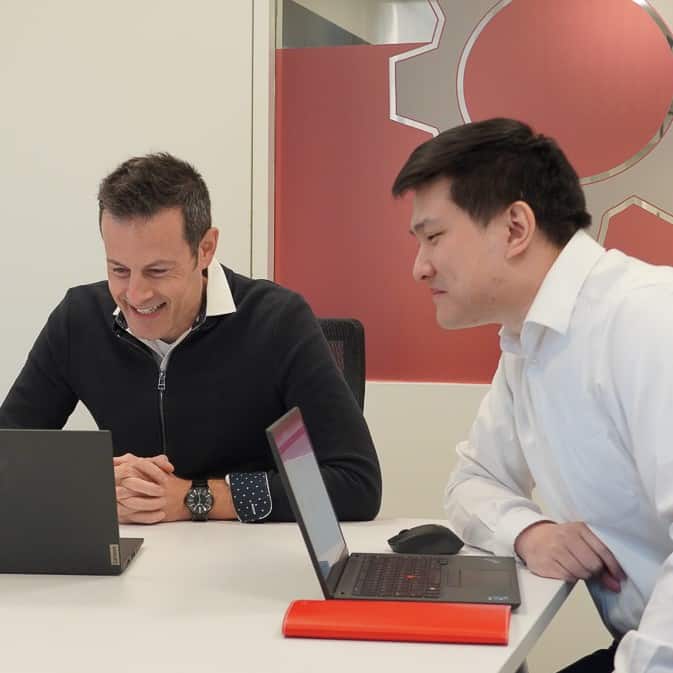Tracking utilization in the contact center is a key to companies remaining competitive. By improving contact center utilization, companies can improve customer service and satisfaction, reduce operating costs, increase employee engagement, and grow top-line revenue.
It is important to define utilization and understand the activities that drive it to achieve and maintain improved results. This article will share why the customer assistance ratio is a significant metric for tracking contact center utilization.
Key takeaways
-
Utilization should be measured with a robust metric, the customer assistance ratio (CAR)
-
There is an ideal utilization range: too little or too much utilization both have drawbacks
-
Utilization (CAR) must be evaluated alongside quality and engagement metrics, not in isolation
Defining utilization in a contact center
A frontline employee’s primary task is handling customer interactions. This is where the frontline employee adds value to the company. Therefore, when measuring utilization in a contact center, we focus primarily on interactions between customers and frontline employees. However, this is not the only area contributing to an efficient contact center environment, as we will explain later.
Burnie Group has developed a proprietary metric called the customer assistance ratio (CAR) to reflect the utilization of a contact center. The CAR represents how much paid frontline employee time is spent handling customer calls. The calculation is:
Customer Assistance Ratio (CAR) = Total Handle Time ÷ Paid Agent Time
CAR is an effective metric to track utilization over time. A consistently high CAR is also an effective indicator of a successful contact center. A higher CAR correlates with higher employee engagement. This makes sense as engaged employees often have lower absenteeism, lower attrition, and take fewer unsanctioned breaks.
While reducing training and meetings and increasing occupancy can temporarily increase a CAR, these methods generally result in increased absenteeism, attrition, and unsanctioned breaks that offset any short-term gains. While the decrease in CAR may be gradual, the overall impact on utilization, quality, and throughput are significant.
How do frontline employees spend their time?
To understand the customer assistance ratio and total handle time, we must identify all the activities during frontline employees’ work hours. Below is an illustration of the typical activities a frontline employee experiences during a regular workweek.
We classify time into two categories: Out-of-office time and In-office time.
Out-of-office time is vacation, sick, short/long-term disability, holidays, personal time off, etc.
In-office time includes off-phone time and on-phone time elements. Below are the five elements that make up in-office time.
- Off-phone time: This includes meetings, huddles, training sessions, coaching, and breaks.
- Ready-and-waiting idle time: Time a frontline employee is not engaged and is waiting for the next customer to call.
- On-call time: Time a frontline employee spends on the phone talking with a customer.
- On-hold time: Time a frontline employee spends keeping a customer on hold while they look into information related to the call.
- After-call time: Time an FLE spends completing after-call work (e.g., checking information, documenting customer interaction).

Average Handle Time
Average handle time is the length of the average call a frontline employee has with a customer.
Why it isn’t an effective indicator of performance
Average handle time is not an effective indicator of performance due to significant industry-specific variances and company-specific strategic choices that influence call time. The variables that affect average handle time include:
Business segment
The average handle time for calls related to everyday banking, where common offerings apply to most customers, is very different than calls to wealth management organizations providing tailored services and products.
Customer interaction model
A personalized interaction model that results in high satisfaction rates requires longer average handle times than a quick, transactional approach.
Company strategy
Organizations may choose to spend more time with customers to increase revenue, such as by cross-selling and up-selling, or enhance the customer experience, such as by proactively ensuring that all customer account details are accurate.
What is total handle time?
Total handle time is the time spent handling customer calls. It is an important part of our formula for the customer assistance ratio.
Total handle time includes three components, all of which are necessary to serve a customer and handle a call properly:
On-call time + On-hold time + after-call time = total handle time
What is an ideal customer assistance ratio for a contact center?
The ideal range for a CAR is between 60% and 70%. At this ratio, an organization can offer a great customer experience while staying efficient and maintaining high employee engagement.
Being in the ideal range is usually the result of:
- Efficient use of frontline employees
- High employee satisfaction
- Meaningful training, coaching, and mentorship for frontline employees
The higher the CAR, the more efficient the frontline employees are. However, some utilization loss can occur in each category. Some causes of utilization loss are avoidable, such as overstaffing, which leads to a high ready- and-waiting idle time. However, some are unavoidable, such as vacations and statutory holidays. Some causes are even desirable, such as training and personal development meetings that factor into off-phone time.
While going beyond the ideal range may drive higher utilization in the short term, it can negatively affect employee morale and satisfaction resulting in an overall utilization loss.
Measuring quality versus utilization
The customer assistance ratio does not describe the quality of output delivered to customers by frontline employees. That is why it is important to track this metric in addition to customer satisfaction (via net promoter score) and repeat calls (via first call resolution).
Banking and insurance benchmarks
Banking
Our banking contact center benchmark suggests that contact center queues in banking have a median CAR of 52.3%. On average, there is a lot of room for improvement. Best-in-class banking contact center queues reached a CAR of nearly 68%.
Banking benchmark participants with low CAR had higher absenteeism rates and higher attrition rates. Lower CAR can also indicate higher off-phone time, such as too much time spent in meetings or breaks, or higher than necessary ready-and-waiting idle time caused by poor resource planning.
Insurance
Our insurance contact center benchmark demonstrated similar results to our banking benchmark with a median CAR rate of 56.7% and best-in-class queues approaching 69%. Insurance benchmark participants with low CAR often had high off-phone time and ready and waiting idle time.
Proper resource planning plays a significant role in the insurance industry. The insurance industry is subject to seasonality and subsequent ability to adjust available capacity (e.g. through different seasons or after major claims resulting from hail, flooding etc.). Similar to the Banking industry, a low CAR can also indicate higher sick and short-term disability rates (though attrition rates are lower than in banking due to the licensing requirements for insurance agents).
Why your contact center should focus on customer assistance ratio
When done right, an efficient contact center delivers a number of strategic benefits crucial to remaining competitive in today’s marketplace:
Competitive cost position
The ability to deliver quality service at low costs positively impacts a company’s bottom line, creating opportunities for higher investments into existing products and services, better talent, and future growth.
Superior value for customers
When time is allocated efficiently and processes are streamlined, resources are freed up to enhance the customer experience, such as implementing new value-added services or providing longer service hours.
Better customer experience
Optimized utilization results in a better customer experience, including lower waiting times in the phone queue and fewer errors when handling customer requests or forwarding customer calls.
Customer assistance ratio is a significant KPI for organizations that wish to track utilization in their contact centers. When the customer assistance is benchmarked alongside more commonly tracked KPIs, like average handle time, the result is a robust view of contact center performance.
Burnie Group’s benchmarks
CAR is one of the KPIs in Burnie Group’s contact center benchmarks. Burnie Group completes ongoing contact center benchmark studies exploring nearly a hundred contact center metrics across various industries. We benchmark only comparable queues so that participating clients can embed them into their own contact center strategies. To participate in our next benchmark, contact us.
We have extensive experience helping world-class organizations identify and improve a wide range of operations issues. We help companies understand their contact center and omnichannel performance, define what can be done to improve it and help implement solutions.
Frequently asked questions
What exactly goes into the total handle time used in the CAR formula?
Total handle time includes on-call time (actual conversation with the customer), on-hold time (when the customer is placed on hold while the agent looks up information), and after-call work (administrative or follow-up tasks after the call ends). These three components together represent the time actually spent handling customer interactions.
Why not just use average handle time (AHT) instead of CAR to measure performance?
Because AHT only reflects the average duration of customer calls, it doesn’t account for the full context: variations in call types, complexity, company strategy (e.g. upselling, personalized service), or non-call activities like breaks, training or idle waiting time. As a result, AHT alone can be misleading. CAR, by using total paid time as denominator, gives a more comprehensive view of agent utilization.
If CAR is low, what might that indicate and how can a contact center improve it?
A low CAR could indicate inefficient resource planning: for example, too much idle time (agents waiting for calls), excessive time in meetings/training, or other non-customer-facing overhead. It could also point to overstaffing. To improve CAR, centers should optimize staffing levels, streamline workflows (to reduce idle or non-productive time), and balance between necessary off-call activities and customer handle time.
Our insights on contact centers
Learn more about our benchmarking program.
CONTACT US




